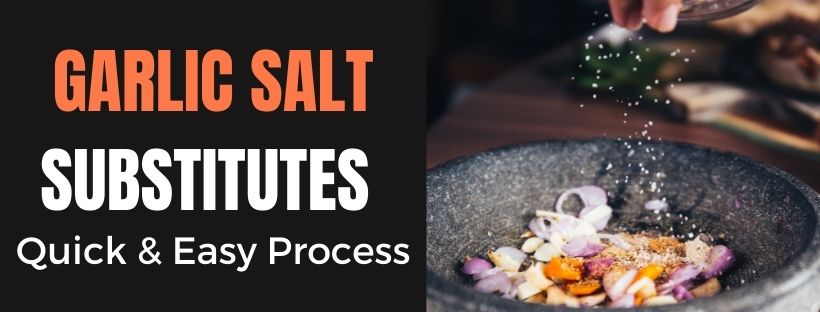
Garlic salt is one of the many kitchen wonders that all of us adore. It makes a quick meal taste better.
Moreover, it gives you more control over the contents of flavor you’re looking to add in your recipe. Thanks to its precision and consistent flavors, Garlic salt can also be used as seasoning over regular snacks like fried chicken, popcorn, french fries, etc.

In contrast, garlic salt has numerous health benefits ranging from lowering cholesterol in your blood to sugar levels. It is a great anti-inflammatory agent that you can use for digestive purposes, and if not anything else, it makes any mundane food item resurface back to life.
Garlic salt, as you know, is a mixture of garlic and salt, making it conveniently replaceable. So if you run out of garlic salt, don’t bother canceling plans. Below are simple alternatives that you can get your hands on from the comfort of your home at any time. And they are just as stimulating for your tastebuds!
What do doctors say about the benefits of garlic in our food?
“Garlic contains phytochemicals such as allicin and organosulfur compounds. These phytochemicals (or plant compounds) are responsible for the plant’s heart-healthy, immune-supportive, anti-inflammatory, and nutritional properties.”
– Dr. Sudha Raj, a teaching professor at Syracuse University’s Falk College of Sport and Human Dynamics in Syracuse, New York.
Regarding the digestive benefits of garlic, Dr Wendy Bazilian, a doctor of public health and nutritionist in San Diego also added that it “may help decrease the production of cholesterol by the liver.”
Dr. Bazilian also recommends increasing our garlic intake in foods like pasta, stir-fries, roasted vegetables, sauces, etc.
Paste it up: Garlic & Salt
A garlic and salt paste is an ingenious substitute that you need to incorporate in your kitchen today. The idea that you can always chop a few garlic cloves and mash them in with salt to create a paste simplifies the task exponentially.
- You’ll need four to six fresh garlic cloves.
- Two teaspoons of salt.
- Chop the fresh garlic into fine pieces and add the salt.
- Mash the minced garlic with the salt to the point the garlic disappears into a thick paste.
- The salt crystals dissolve nicely into garlic juices to create an effective paste.
